Abstract
Studies have been conducted in Liberia on the effect of pyrimethamine on the sporogony and, for the first time, on the pre-erythrocytic schizogony of Laverania falciparum. From the results reported here it is concluded that it may reasonably be assumed that a mass monthly regimen of pyrimethamine in Liberia could afford protection to the individual and to the mosquito and thus to the population at large, provided that resistance to pyrimethamine does not intervene.
Pyrimethamine in single doses of 25 mg or 50 mg administered to gametocyte carriers was able to render gametocytes of L. falciparum uninfective to A. gambiae for periods up to 28 days after administration.
Mosquitos feeding upon a malaria-free pyrimethamine-treated subject before or after feeding upon a non-treated gametocyte carrier became infected and sporozoites appeared in the salivary glands.
Pyrimethamine administered in 12.5-mg doses 13 days before, 6 days before and 2 days after sporozoite infection or administered in 25-mg doses 35 days and 7 days before sporozoite infection disallowed the development of the pre-erythrocytic schizonts of L. falciparum in the livers of two chimpanzees.
Full text
PDF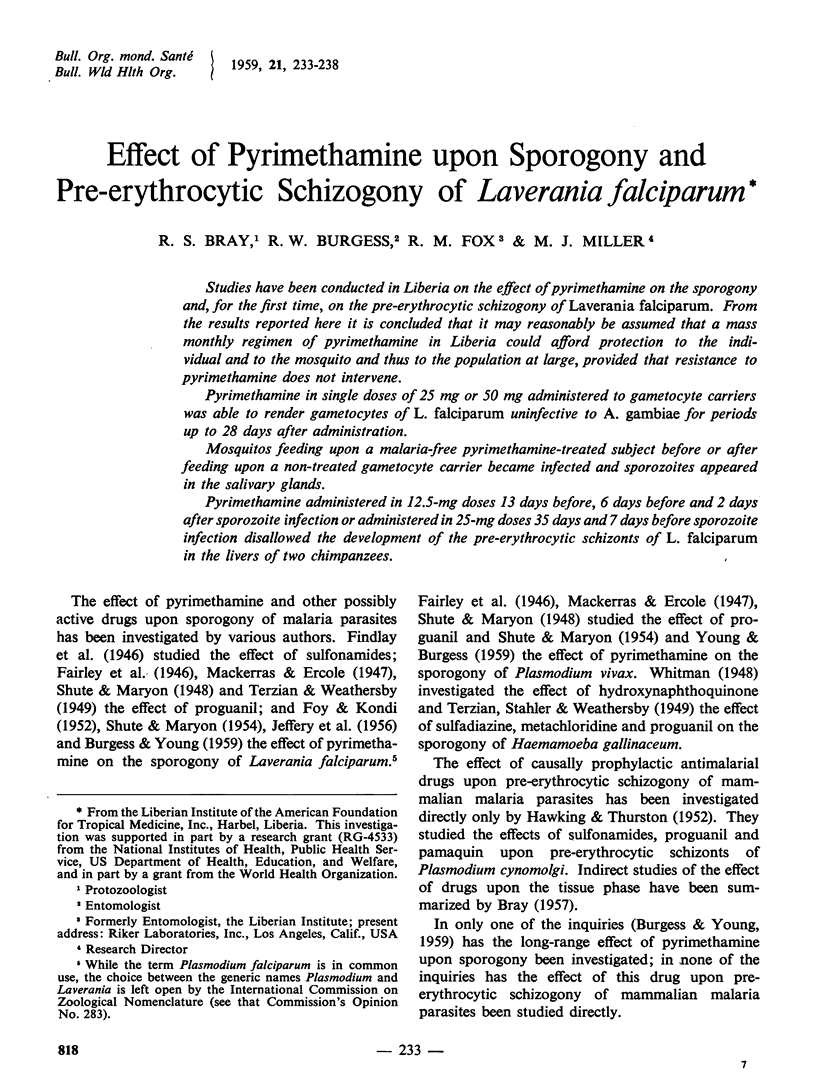
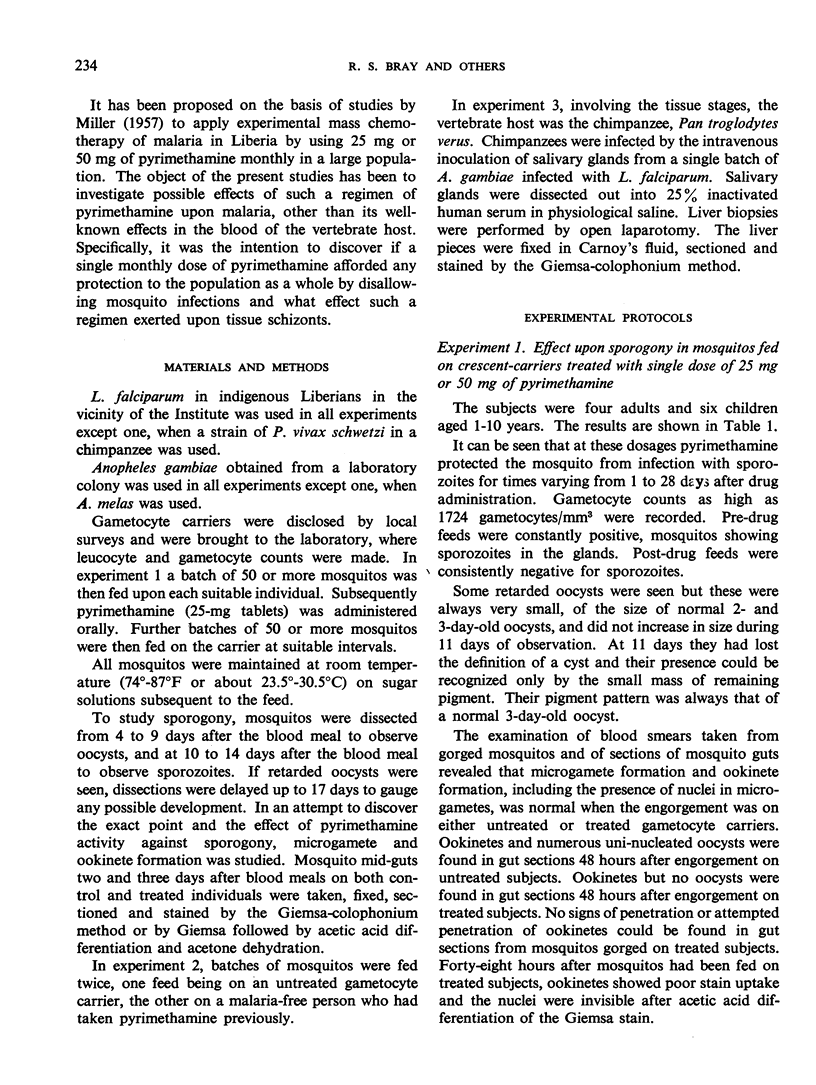
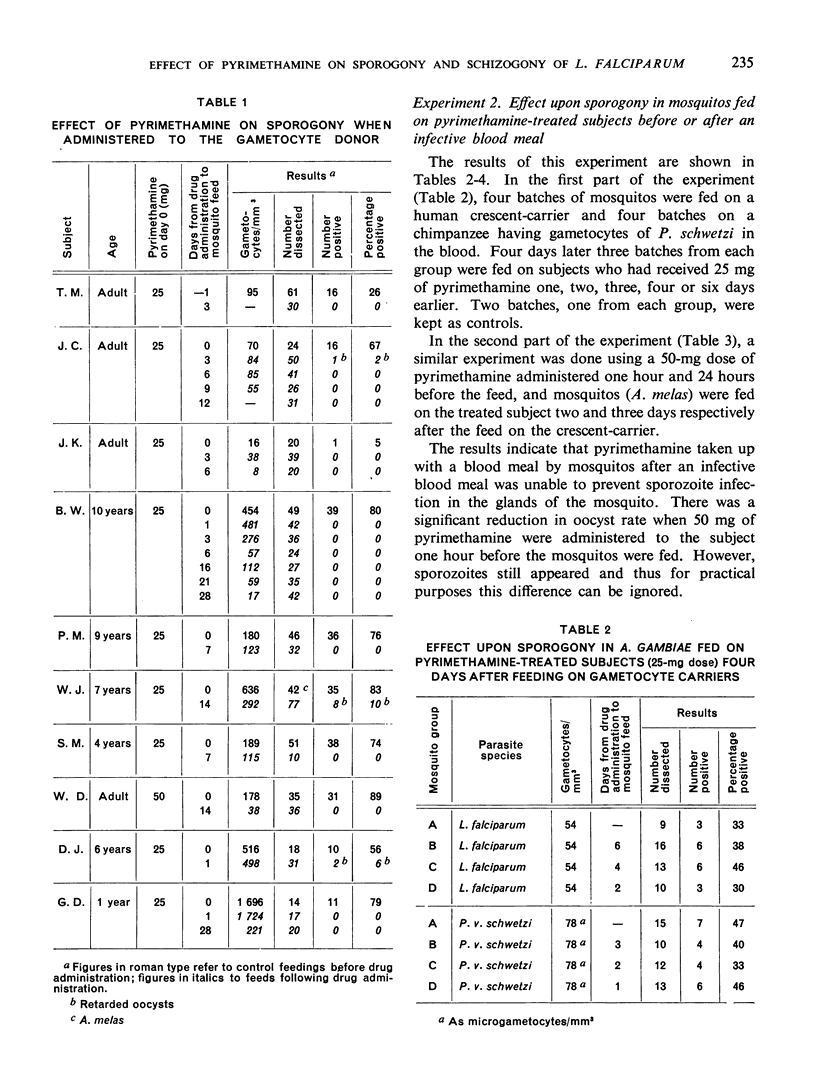
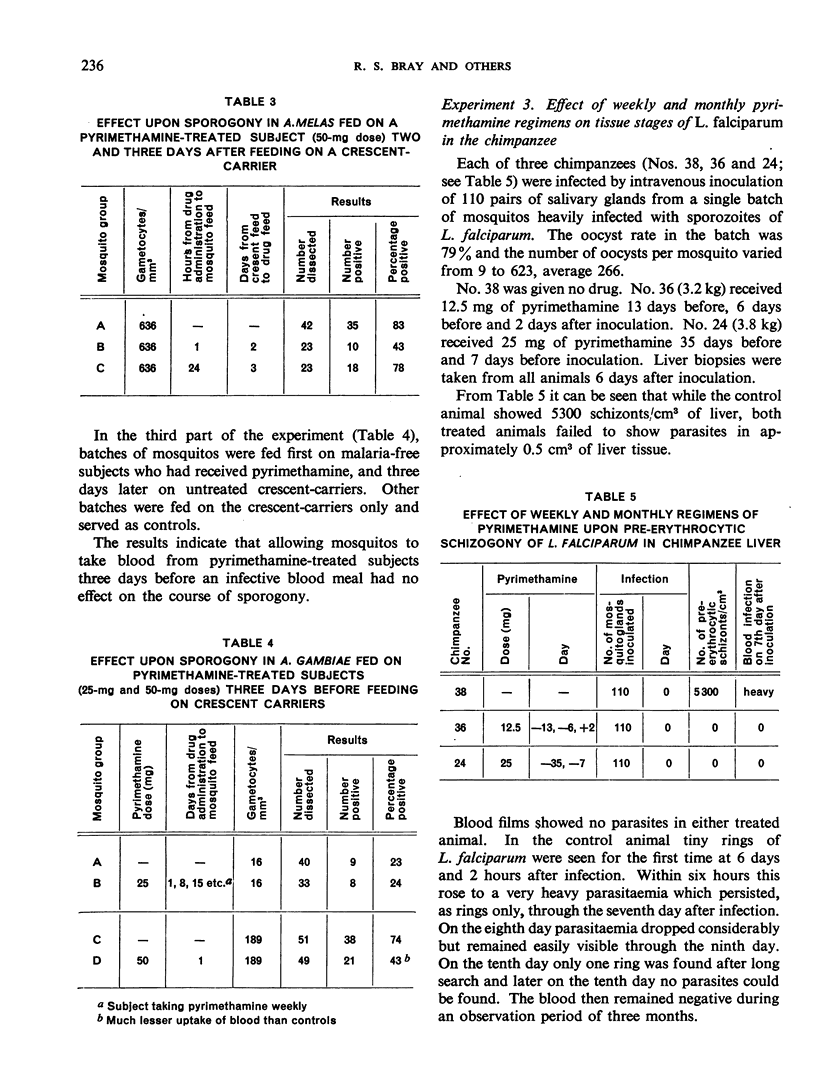

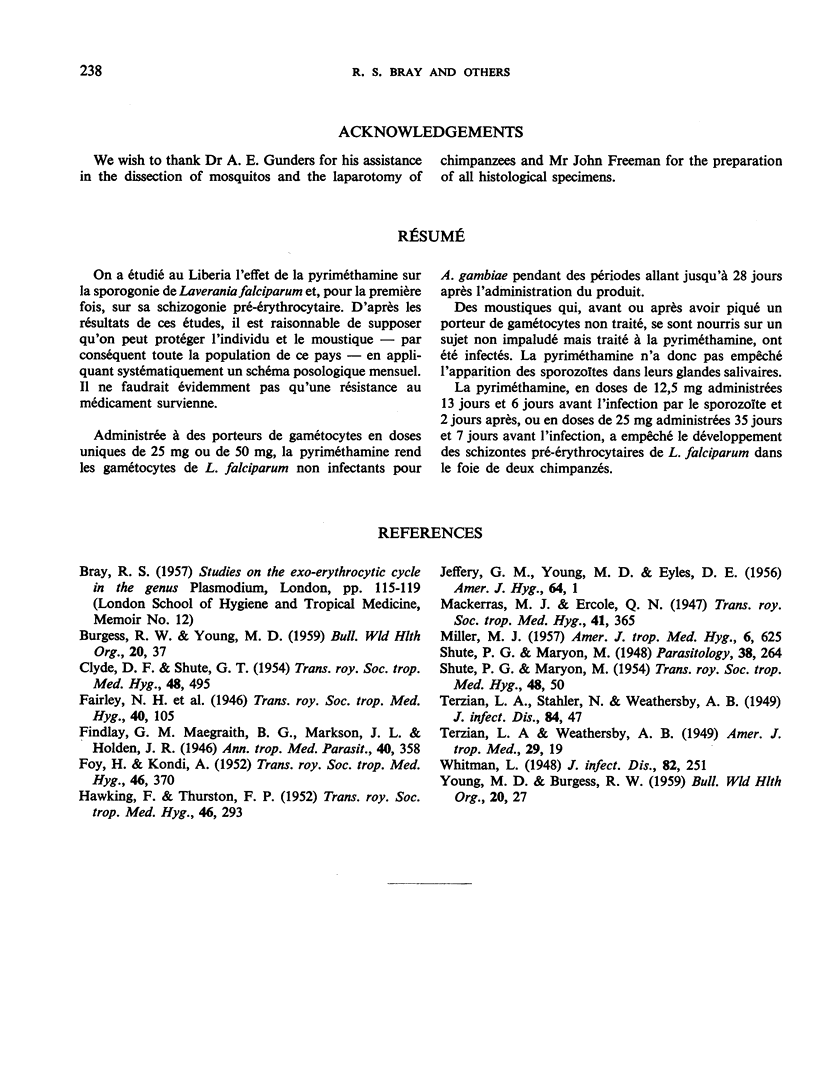
Selected References
These references are in PubMed. This may not be the complete list of references from this article.
- BURGESS R. W., YOUNG M. D. The development of pyrimethamine resistance by Plasmodium falciparum. Bull World Health Organ. 1959;20(1):37–46. [PMC free article] [PubMed] [Google Scholar]
- CLYDE D. F., SHUTE G. T. Resistance of East African varieties of Plasmodium falciparum to pyrimethamine. Trans R Soc Trop Med Hyg. 1954 Nov;48(6):495–500. doi: 10.1016/0035-9203(54)90085-1. [DOI] [PubMed] [Google Scholar]
- HAWKING F., THURSTON J. P. Chemotherapeutic and other studies on the pre-erythrocytic forms of simian malaria (Plasmodium cynomolgi). Trans R Soc Trop Med Hyg. 1952 May;46(3):293–300. doi: 10.1016/0035-9203(52)90077-1. [DOI] [PubMed] [Google Scholar]
- JEFFERY G. M., YOUNG M. D., EYLES D. E. The treatment of Plasmodium falciparum infection with chloroquine, with a note on infectivity to mosquitoes of primaquine- and pyrimethamine-treated cases. Am J Hyg. 1956 Jul;64(1):1–11. doi: 10.1093/oxfordjournals.aje.a119818. [DOI] [PubMed] [Google Scholar]
- MILLER M. J. Further studies on malaria suppression by monthly drug administration. Am J Trop Med Hyg. 1957 Jul;6(4):625–637. doi: 10.4269/ajtmh.1957.6.625. [DOI] [PubMed] [Google Scholar]
- SHUTE P. G., MARYON M. The effect of pyrimethamine (daraprim) on the gametocytes and oocysts of Plasmodium falciparum and Plasmodium vivax. Trans R Soc Trop Med Hyg. 1954 Jan;48(1):50–63. doi: 10.1016/0035-9203(54)90038-3. [DOI] [PubMed] [Google Scholar]
- TERZIAN L. A., STAHLER N., WEATHERSBY A. B. The action of antimalarial drugs in mosquitoes infected with Plasmodium gallinaceum. J Infect Dis. 1949 Jan-Feb;84(1):47–55. doi: 10.1093/infdis/84.1.47. [DOI] [PubMed] [Google Scholar]
- TERZIAN L. A., WEATHERSBY A. B. The action of antimalarial drugs in mosquitoes infected with Plasmodium falciparum. Am J Trop Med Hyg. 1949 Jan;29(1):19–22. doi: 10.4269/ajtmh.1949.s1-29.19. [DOI] [PubMed] [Google Scholar]
- YOUNG M. D., BURGESS R. W. Pyrimethamine resistance in Plasmodium vivax malaria. Bull World Health Organ. 1959;20(1):27–36. [PMC free article] [PubMed] [Google Scholar]


